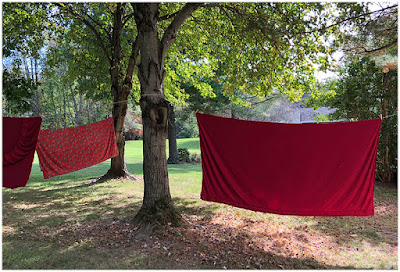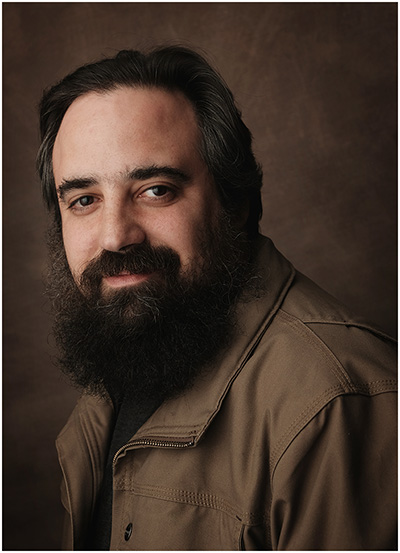In this review, I’ll put the PiXAPRO CITI600 portable strobe (also called the Godox Wistro AD600BM) through the paces and give you my thoughts on it.
Despite the innovations to all manner of photography equipment, studio strobes haven’t changed much in the past few decades. Sure, a handful of features get added here and there every once in a while, but for the most part, you know exactly what you’re getting: a powerful light source with a very short duration that is plugged into an electrical outlet.
But this has changed in the past few years. Manufacturers have begun to incorporate features like batteries, TTL (through the lens metering) compatibility and high-speed sync into their strobes. These features make the humble studio strobe more useful and more versatile than ever.

The PiXAPRO CITI600 is the Godox Wistro AD600BM rebranded for the UK market.
The PiXAPRO CITI600 does all of these things. The CITI600 is a battery powered strobe whose features include high-speed sync and TTL metering (through the use of a separate camera mounted trigger).
Rebranded
Pixapro is Godox rebranded for the UK market. The CITI600 is the same product as the Godox Wistro AD600BM. The only difference is that the battery can be safely charged via a 220v power outlet.
High-Speed Sync

High-speed sync allows you to better control how your ambient and strobe lighting mix together.
If you own a speedlight, you are probably already familiar with high-speed sync (HSS). In short, HSS allows you to sync your flash with your camera at significantly faster shutter speeds than normal.
Doing so provides you with the means to overpower the sun on bright days, easing the effects of harsh lighting. It also allows you to darken backgrounds and use larger apertures to obtain a shallow depth of field in situations that you would normally be relegated to small apertures such as f/11 and f/16.
Because of the small size and limited power of speedlights, HSS has always been a bit of a specialist technique. However, put that functionality into a high powered strobe with a large modifier mounted to it and those limitations disappear. This opens up a world of new possibilities for you.
Battery Powered

No cords and no generators make the Citi600 as portable as possible. If you’re willing to carry it, you can have a high powered strobe wherever you want.
Even without HSS, it has always been possible to use studio strobes to great effect outdoors. The limitations, however, made it impossible for most photographers. Because strobes are electrically powered, to take them on location, you need external battery packs or generators.
Both of these things were/are expensive and difficult to lug around. With the inclusion of a high capacity battery in a strobe, these concerns disappear and your strobe can now go virtually anywhere a speedlight can.
TTL

TTL metering makes mixing ambient light and artificial life much, much easier.
Through the lens metering (TTL) allows your camera to take a meter reading and relay that information to your strobe, making it much easier to mix flash with ambient lighting. It’s not perfect and won’t likely ever be, but in a pinch, TTL metering can make getting a good exposure quick and easy.
For example, if you are on location and you know that you want a dark background with a well-exposed subject, you could set your camera’s exposure to underexpose the ambient by two stops and fire the strobe at whatever the meter is reading. Fine tuning the strobe’s exposure can be as simple as dialing in a few stops of exposure compensation on your trigger.
PiXAPRO CITI600 – Godox Wistro AD600BM

Combined, these three features take the already versatile studio strobe to a whole new plane of utility and the PiXAPRO CITI600 with the ST-IV trigger does a fantastic job of it. In the months that I’ve owned mine, I can attest that the HSS functionality works perfectly without flaw.
On top of that, there are a few other things worth discussing.
Specs
As you’d expect from a modern, feature-laden strobe, the spec sheet for the CITI600 (Godox Wistro AD600BM) is rather impressive. There’s no need to bore you with the full specs, but some notable highlights include:
- A guide number (GN) of 87m @ ISO 100
- A color temperature of 5600k
- HSS up to 1/8000th of a second
- 100m range with the ST-IV trigger
ST-IV Trigger

The ST-IV trigger gives you complete wireless control over the Citi600 from the top of your camera.
For the trigger, I opted for the hotshoe mounted ST-IV (Xpro-C for Canon as it is called in the USA – $ 69.00). This trigger offers access to the full functionality of the CITI600 in an extremely easy to use interface with an LED display.
Controls

All of the controls on the CIti600 are clearly marked and very user-friendly.
On both the PiXAPRO CITI600 (Godox Wistro AD600BM) and the ST-IV (Xpro) trigger, the controls are intuitive, clearly labeled and easy to use. Dialing in exposure compensation is simply a matter of turning the dial on either device. Most of the functionality can be accessed by a single button push.
It is also worth pointing out that while the controls are easy to use, all of the displays are clearly labeled and easy to read.
Battery Capacity
PiXAPRO claims that a single charge of the battery will provide 500 flashes at full power. I can’t confirm these exact numbers, but I’ve had the strobe out on a number of occasions where it was in use for several hours at a time. Never once did I have to turn the strobe to full power. The battery indicator never even got to halfway.
It may be possible to drain the battery in a full day, but every indication seems to suggest that this battery is not going to run out on you.
Supposing that you do somehow burn through the battery in a single session, Pixapro does sell spares and at $ 180.00. That is more than reasonable for the amount of power that they provide.
Duration

The display on the CITI600 is large and easy to read with all relevant information clearly represented.
This one’s a bit new to me, but it may be a useful feature for you. For whatever settings you have dialed in, the display on the CITI600 tells you exactly how fast the flash duration will be, up to 1/10,000th of a second.
Do you absolutely need to freeze the movement in your frame? Just choose a setting that will give you the desired flash duration and you should be good to go.
Mount
Coming from the Bowens system, all of my modifiers are S-mount. The fact that S-mount is an option on the CITI600 just makes life so much easier. If you’re unsure about it, there are tons of affordable modifiers available for the S-mount. You will never be lacking in choice should you buy into the S-mount system.
Modeling Light
The Citi600’s modeling light is a fairly powerful LED. This has several advantages.
The LED draws less power than your traditional modeling bulb, meaning that there is less strain on your battery. LEDs also do not get anywhere near as hot as tungsten bulbs. For your subjects, this means more comfort as they’re less likely to get too warm under the heat of the lights. It also means that certain modifiers and gels pose much less of a fire risk.
It is also entirely possible to light a scene with just the modeling light. You probably won’t want to do this for a portrait session, but for table top setups and the like, you can use the CITI600 as a continuous light and put even less strain on the battery.
I will add that using the modelling light on location during daylight hours will not usually work due to light levels.
Build Quality

The PiXAPRO CITI600 is well built and feels solid. Although it is significantly less expensive than similarly featured strobes from companies like Elinchrom, every aspect of the CITI600 feels like it is built to last.
Price Point
If you think all of this sounds great, than there is one surprise for you. The PiXAPRO CITI600 comes with a price tag of around $ 600.00 making it significantly cheaper than similar offerings from Elinchrom, Broncolor, or Profoto.
In Use

It can be awkward to carry the CITI600 with a large modifier about on location. But if you can be bothered, it is more than worth the effort.
Honestly, the PiXAPRO CITI600 works like a dream. I’ve had it out over the past few months as often as I can because it’s just so simple and fun to use. Sure, lugging it around on location with a five foot Octabox can be tricky, but the extra effort is beyond worth it.
Here are a few examples of images achieved with the PiXAPRO CITI600 (Godox Wistro AD600BM).



All in All
Since the demise of Bowens, I have been looking for a new system to eventually buy into. Without a doubt, that is going to be Pixapro/Godox.
The PiXAPRO CITI600 (Godox Wistro AD600BM) is as close to perfect as you can get from my perspective. This portable strobe is high in functionality and easy to use. That’s before you even consider the HSS, TTL and the fact that it is battery powered. Basically, it’s everything you could possibly want with a much lower price tag than you should reasonably expect.
The post Light Review: The PiXAPRO CITI600 Portable Strobe (Godox Wistro AD600BM) appeared first on Digital Photography School.

Digital Photography School



























You must be logged in to post a comment.